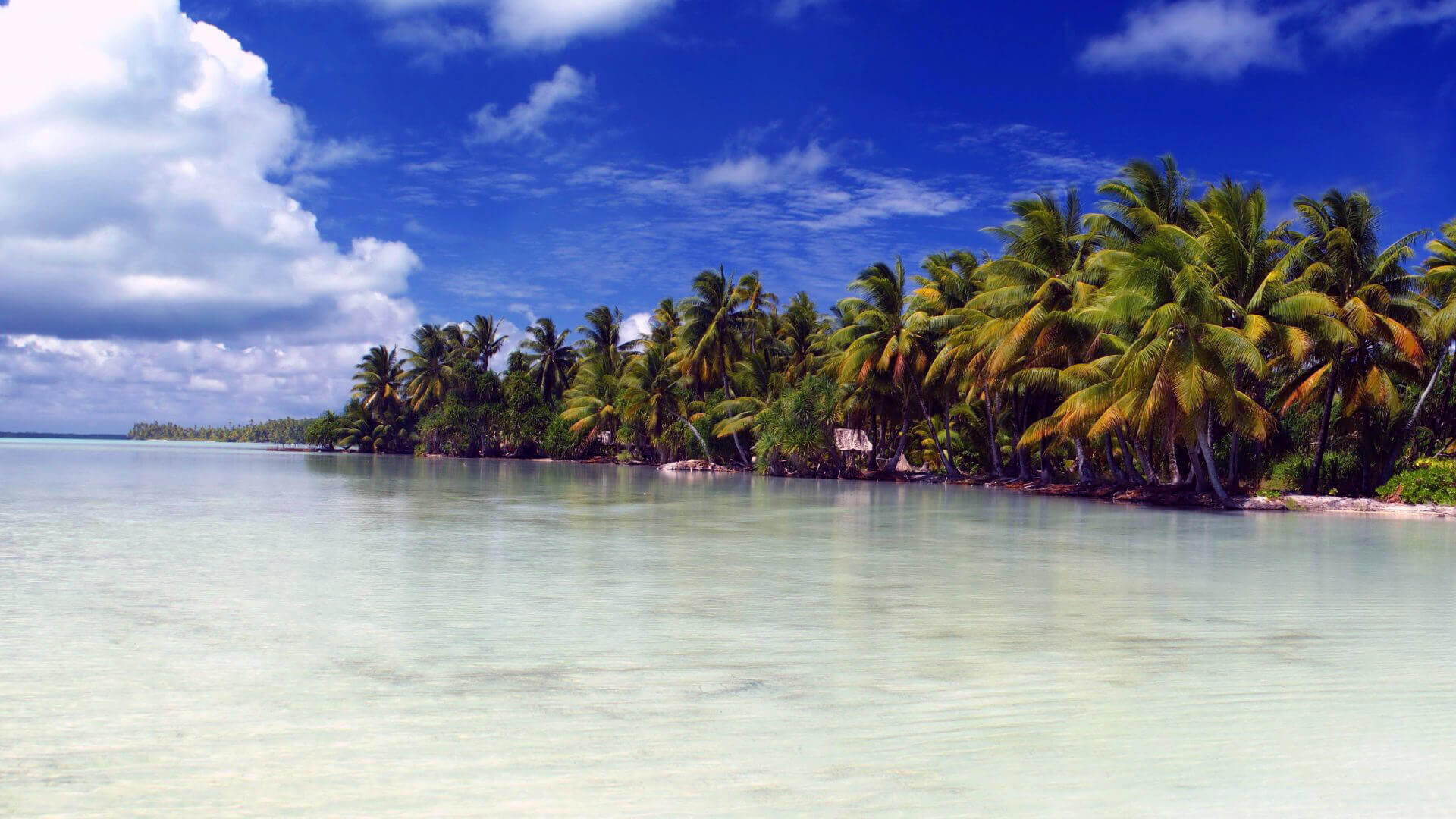Kiribati is made up of 33 atolls and one lonely island (Banaba), and it stretches into both the eastern and western hemispheres, as well as the northern and southern hemispheres. It is the only nation that can be found in all four hemispheres. The island groupings are as follows:
Banaba is a remote island located between Nauru and the Gilbert Islands.
Gilbert Islands: A group of 16 atolls situated around 1,500 kilometers (932 miles) north of Fiji.
The Phoenix Islands are a group of eight atolls and coral islands situated about 1,800 kilometers (1,118 miles) southeast of the Gilberts.
Line Islands: A group of eight atolls and one reef situated about 3,300 kilometers (2,051 miles) east of the Gilberts.
Environmental issues
Two tiny uninhabited Kiribati islands, Tebua Tarawa and Abanuea, vanished underwater in 1999, according to the Pacific Regional Environment Programme (formerly the South Pacific Regional Environment Programme). According to the United Nations Intergovernmental Panel on Climate Change, sea levels will increase by approximately 50 cm (20 in) by 2100 as a result of global warming, and additional rises are unavoidable. As a result, it is probable that the nation’s arable land will be susceptible to increasing soil salination and will be completely inundated within a century.
Kiribati’s vulnerability to sea-level rise is worsened by the Pacific decadal oscillation, a climate switch phenomena that leads in shifts from La Nia to El Nio periods. This has an impact on the water level. For example, in 2000, there was a shift from El Nio times of downward pressure on sea levels to La Nia periods of upward pressure on sea levels, which produces more frequent and higher high tide levels. The Perigean spring tide (also known as a king tide) may cause saltwater to flood low-lying parts of Kiribati’s islands.
The atolls and reef islands have the ability to react to fluctuations in sea level. In 2010, Paul Kench of New Zealand’s University of Auckland and Arthur Webb of Fiji’s South Pacific Applied Geoscience Commission published a research on the dynamic response of atolls and reef islands in the central Pacific. The research addressed Kiribati, and Webb and Kench discovered that the three largest urbanised islands in Kiribati—Betio, Bairiki, and Nanikai—increased by 30 percent (36 hectares), 16.3 percent (5.8 hectares), and 12.5 percent (0.8 hectares), respectively.
The Paul Kench and Arthur Webb research acknowledges that the islands are highly susceptible to sea level rise and concludes that: “This study did not assess the vertical growth of the island surface, nor does it indicate that the height of the islands has changed. Because land height has remained constant, the susceptibility of the majority of each island’s land area to submergence due to sea level rise has also remained constant, and these low-lying atolls remain instantly and highly susceptible to inundation or sea water flooding.”
Kiribati is described as having a low risk of cyclones in the 2011 Climate Change in the Pacific Report; nevertheless, in March 2015, Kiribati suffered floods and the loss of seawalls and coastal infrastructure as a consequence of Storm Pam, a Category 5 cyclone that ravaged Vanuatu. Kiribati is still vulnerable to cyclones, which may devastate the low-lying islands’ flora and soil.
Gradual sea-level rise also enables coral polyp activity to build atolls in tandem with sea-level increase. However, if sea level rises faster than coral development, or if polyp activity is harmed by ocean acidification, the durability of atolls and reef islands is less guaranteed.
The Kiribati Adaptation Program (KAP) is a $5.5 million project initiated by the Kiribati national government with the assistance of the Global Environment Facility (GEF), the World Bank, the United Nations Development Program, and the Japanese government. Later, Australia joined the alliance, contributing US $1.5 million to the cause. The initiative will last six years and will support efforts to decrease Kiribati’s susceptibility to the impacts of climate change and sea level rise by increasing climate change awareness, evaluating and preserving accessible water resources, and controlling inundation. Representatives from each of the inhabited atolls recognized significant climate changes that had occurred over the previous 20–40 years and suggested coping strategies to cope with these changes under four categories of urgency of need at the outset of the Adaptation Program. The initiative is currently concentrating on the most vulnerable sectors in the country’s most densely inhabited regions. Improving water supply management in and around Tarawa; coastal management protection measures such as mangrove re-plantation and public infrastructure protection; strengthening legislation to prevent coastal erosion; and population settlement planning to decrease personal hazards are among the initiatives.


